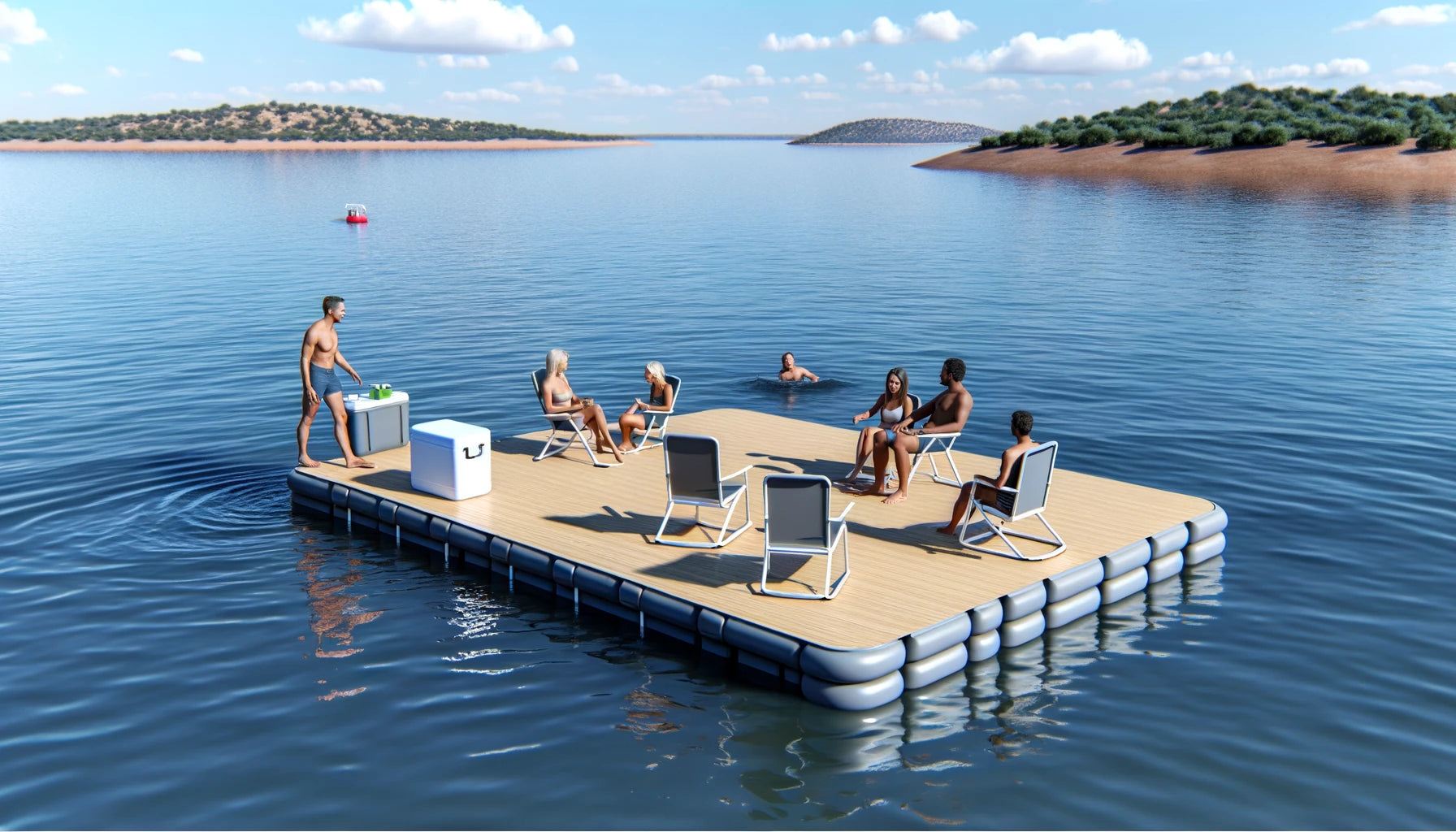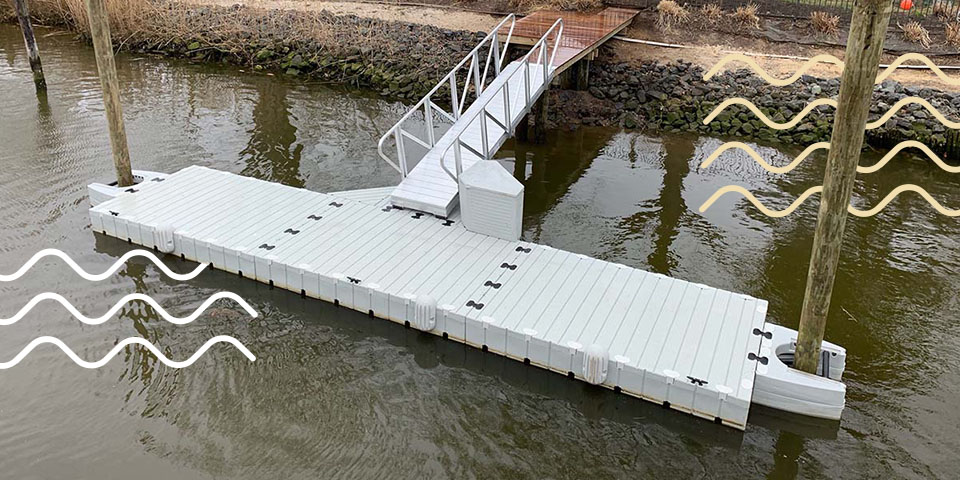Ingenious Floating Docks: The Future of Waterside Access and Recreation
Ingenious Floating Docks: The Future of Waterside Access and Recreation
Blog Article
Upgrade Your Waterside With Sturdy Floating Docks
Upgrading your waterfront with resilient floating docks can significantly improve both functionality and visual appeals, providing a versatile service for numerous water tasks. These structures are created to adjust to fluctuating water levels, making certain security and availability throughout the seasons. With a series of materials readily available, consisting of low-maintenance options and standard timber, choosing the ideal dock can complement your individual style and fulfill sensible demands. Comprehending the nuances of installment and upkeep is critical for ensuring durability and efficiency. What aspects should you think about when making this financial investment?
Benefits of Floating Docks
Floating docks offer a wide variety of benefits that improve their appeal for numerous maritime applications. Unlike standard set docks, floating docks increase and fall with the tide, ensuring constant availability for watercrafts and boat no matter of ecological conditions.
In addition, floating docks are simpler to mount and move, providing flexibility for temporary or seasonal use. Their modular design permits customization to fit particular requirements, whether for exclusive marinas, household waterfronts, or business applications.
Additionally, floating docks produce minimal disturbance to the aquatic atmosphere, preserving neighborhood ecological communities and lowering the chance of disintegration. They likewise provide improved safety and stability for individuals, as their resilient nature offers a much more forgiving surface than rigid frameworks.
In addition, floating docks can promote a varied variety of activities, such as fishing, swimming, and leisure boating, making them a beneficial asset for beachfront advancement. Their convenience and practicality make floating docks a preferred choice for a variety of marine jobs.
Picking the Right Materials
Choosing appropriate products for floating docks is vital to their long life, efficiency, and total performance. When picking products, think about factors such as ecological exposure, maintenance demands, and structural integrity. Common products include wood, plastic, light weight aluminum, and composite choices, each offering unique advantages and disadvantages.
Timber, while cosmetically pleasing, calls for normal upkeep to avoid rot and degeneration. Pressure-treated timber can boost sturdiness, yet it may still succumb to water damages in time. Plastic drifts, usually made from high-density polyethylene, are resistant to rust and need minimal maintenance, making them an appealing option for low-maintenance applications.
Aluminum is another sensible option, understood for its toughness and lightweight buildings. It is resistant to rust and can hold up against harsh weather, although it might be much more costly than various other materials. Composite materials integrate the most effective characteristics of timber and plastic, supplying a low-maintenance and resilient choice that imitates the look of timber without the associated drawbacks.
Inevitably, the selection of product must line up with the planned use, ecological considerations, and budget plan constraints, making sure a practical and durable floating dock that fulfills your particular requirements.
Installment Refine Introduction
The effective installation of a floating dock relies upon mindful planning and execution, making click for info certain that it operates efficiently their website in its intended atmosphere. The primary step entails assessing site conditions, consisting of water depth, coastline features, and prevailing climate patterns, which will notify the dock design and anchoring system.
Following the site assessment, the next phase is to prepare the floating dock parts. This consists of assembling the framework, securing floats, and affixing any kind of essential hardware. It is essential to make sure that all connections are robust and waterproof to withstand marine problems.
When the dock is set up, the installment process begins with positioning the dock in the water. This can involve a crane or other lifting equipment, especially for bigger frameworks. Appropriate positioning is vital for performance and safety and security.

Maintenance Tips for Durability
Regular upkeep is important for making certain the long life and optimum performance of a floating dock. To accomplish this, begin with routine assessments a minimum of twice a year, concentrating on the stability of the dock's structure, consisting of the flotation protection gadgets and connecting equipment. Seek indicators of wear, damages, or deterioration, and resolve any kind of concerns without delay to stop additional wear and tear.
Cleaning is an additional essential element of upkeep. Get rid of particles, algae, and barnacles from the dock's surface to avoid slippery problems and maintain aesthetic appeal. Utilize a mild cleaning agent and a soft brush to prevent harming the dock's materials.
Furthermore, make sure that the dock is effectively anchored and protected to withstand seasonal adjustments in water degrees and climate condition. Inspect the anchoring system for security and make changes as essential.
Enhancing Your Outside Aesthetic
To create an aesthetically appealing outdoor area, including a drifting dock can significantly enhance the total visual of your waterfront property. Floating docks are not only useful yet can additionally work as a striking centerpiece that matches the natural environments - floating dock services. Available in various products and designs, these docks can be customized to match your residential property's architectural design and landscape
The enhancement of attractive components, such as incorporated illumination site here or stylish barriers, even more boosts the dock's visual allure. Take into consideration making use of natural timber surfaces, which mix flawlessly with the setting, or going with contemporary products like light weight aluminum or composite outdoor decking that use a smooth, contemporary appearance.
Purposefully putting planters or seating areas on or around the dock can create welcoming spaces that motivate leisure and pleasure of waterside sights. Furthermore, incorporating shades and structures that integrate with your landscape will develop a cohesive visual throughout your outdoor location.

Verdict

Upgrading your waterfront with durable floating docks can dramatically boost both capability and aesthetic appeals, providing a versatile service for different water tasks. Unlike conventional set docks, floating docks increase and loss with the trend, making sure consistent availability for boats and boat regardless of environmental problems.Selecting ideal materials for floating docks is essential to their longevity, performance, and overall efficiency.When the dock is constructed, the installment procedure starts with placing the dock in the water.In recap, floating docks offer many benefits, including adaptability to water degree adjustments and a selection of product choices.
Report this page